The TV show RuPaul’s Drag Race has popularized drag in North America in the last several years. It’s on its ninth season and up until last week it was more or less the extent of my knowledge about drag. I knew a drag queen was a man who dresses up in women’s clothes with an emphasis on exaggerated femininity, and I knew what drag performances usually looked like, but that was about it. So I was privileged to spend an evening learning from Jason as he did makeup, dressed up and became the queen Irma Gerd.
Jason had a personality that even as I write this I know is going to be difficult to adequately describe, because Irma had a personality too; and as the makeup went on the two intersected and blended into each other, creating an unpredictable confluence of wit and mischief. Jason knew I wanted to hear real stories; Irma liked making things up. Jason was humble and laid back; Irma was impishly self-centered. Jason didn’t mind talking; Irma was focused on getting her makeup right.
It was performance, and it was intentional as much as it was fun. His drag persona lifted the conversation and spun it around with laughter and attitude. Irma’s presence was like mascara, unpredictable and uncompromising and an outline of clarity. Beautiful as hell.
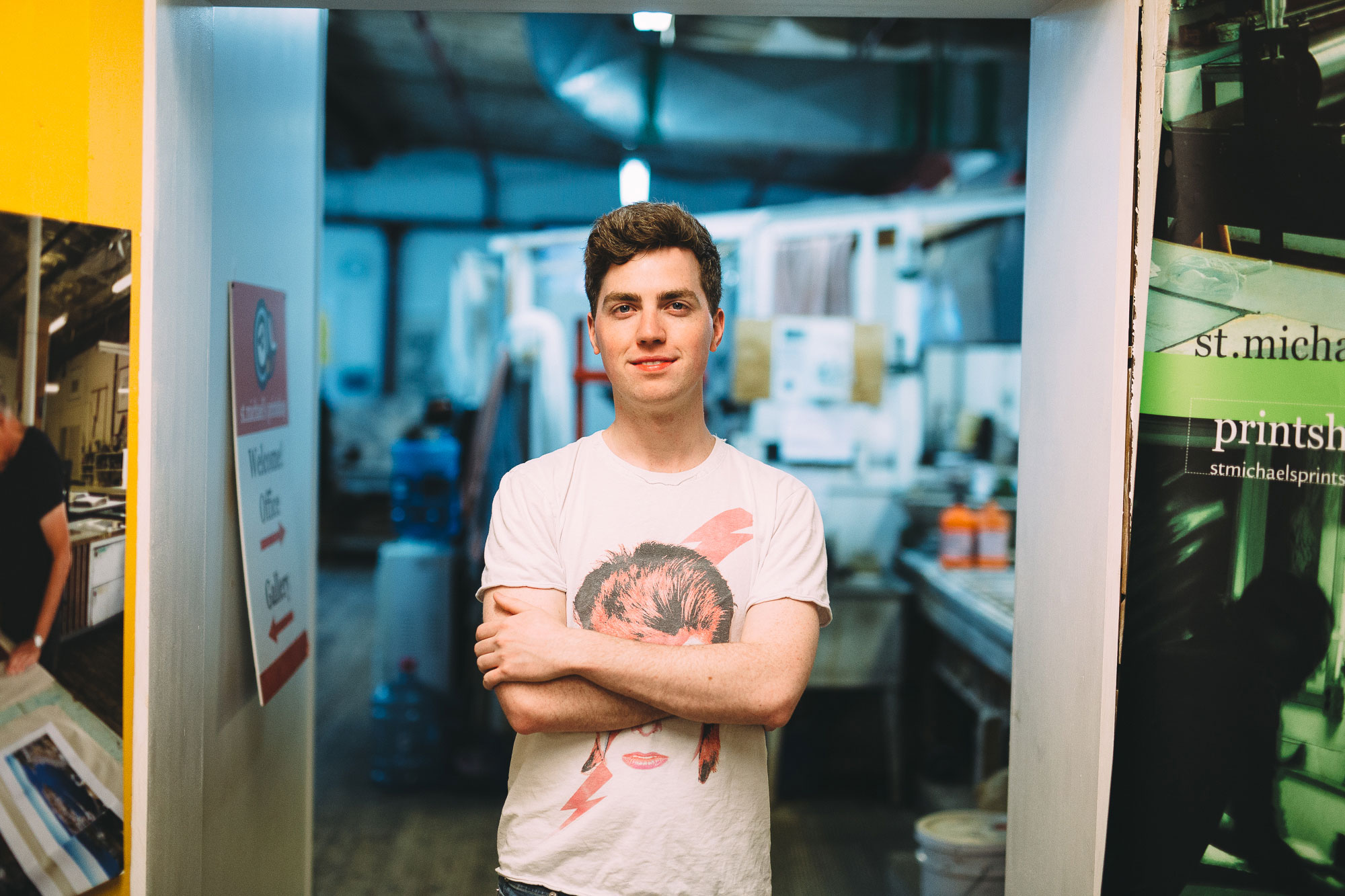
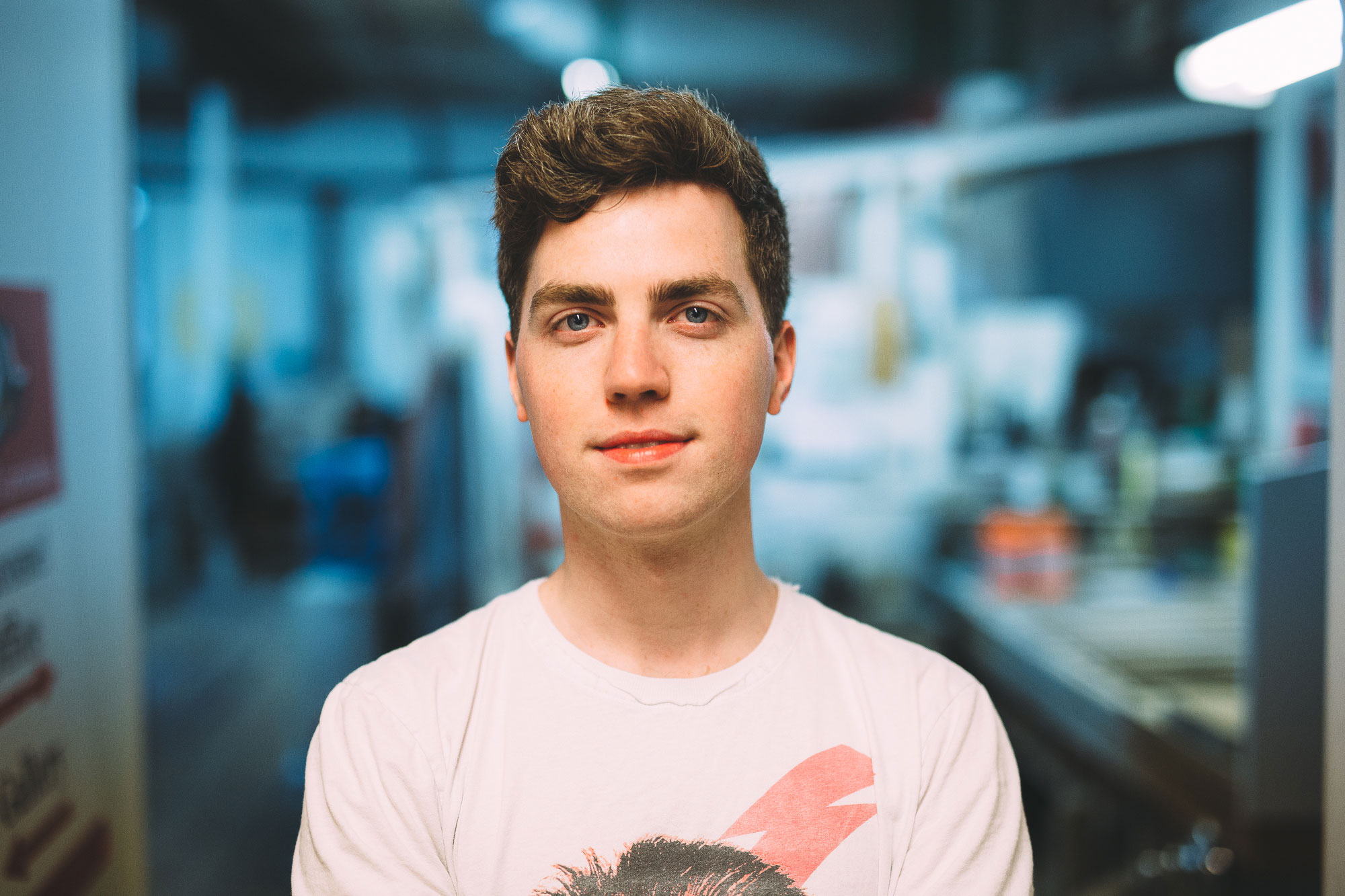
Jason walked in out of the cold St. John’s evening with headphones around his neck and his hands in his pockets. He took off his jacket and I took a couple of photos of him as ‘before’ shots, then he started setting up his mirror and unpacking his makeup kit.
The first thing he did was glue his eyebrows back in order to repaint them higher. “Is that special glue?” I asked.
“Very special,” he said, with wryness that fit his lips like lipstick. “It cost one dollar at the dollar store.”
As he started applying foundation he started talking about his roots in drag, from dressing up as a kid to a feminine costume in high school to his introduction to night clubs in Toronto as a young adult.
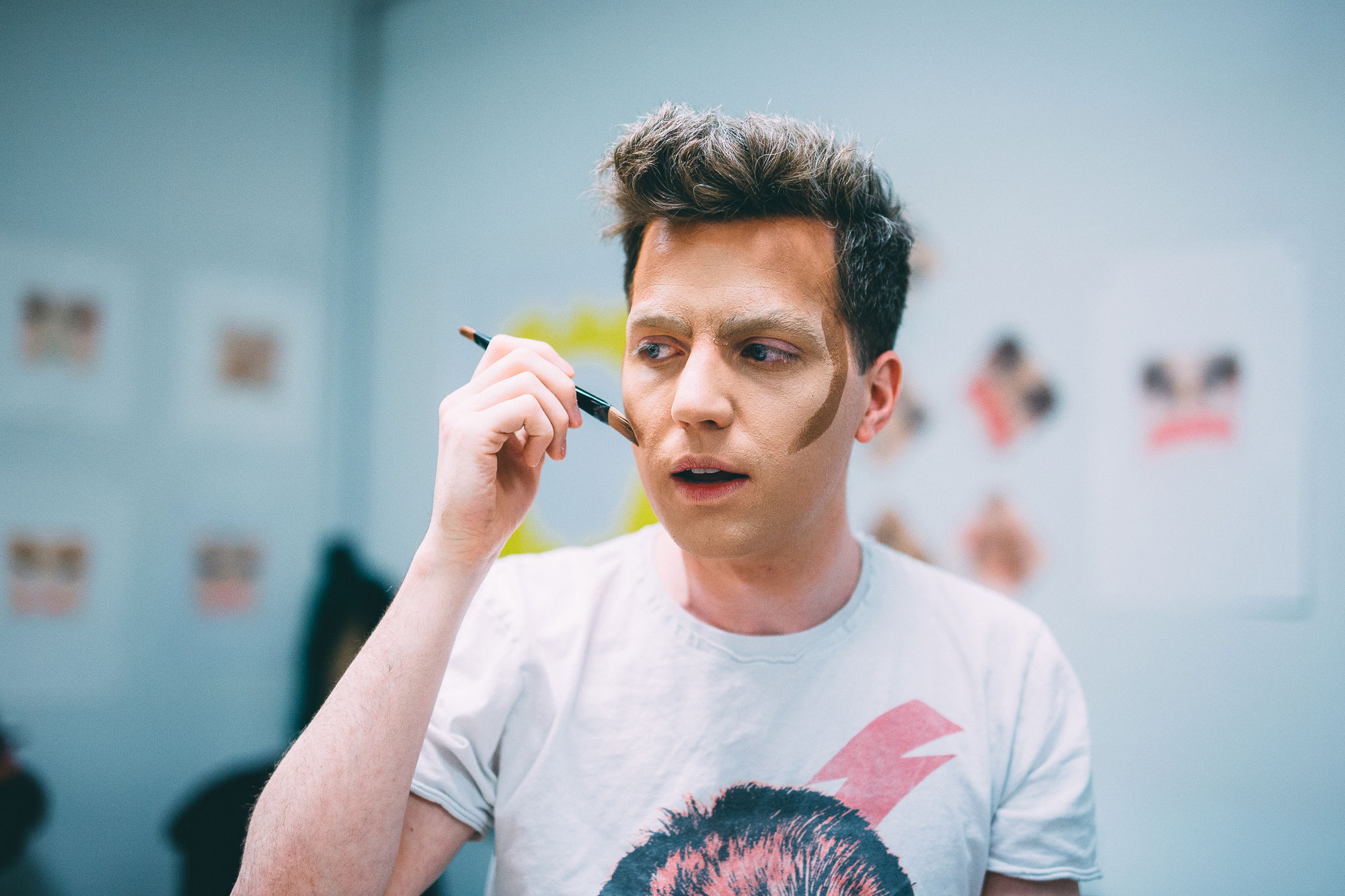
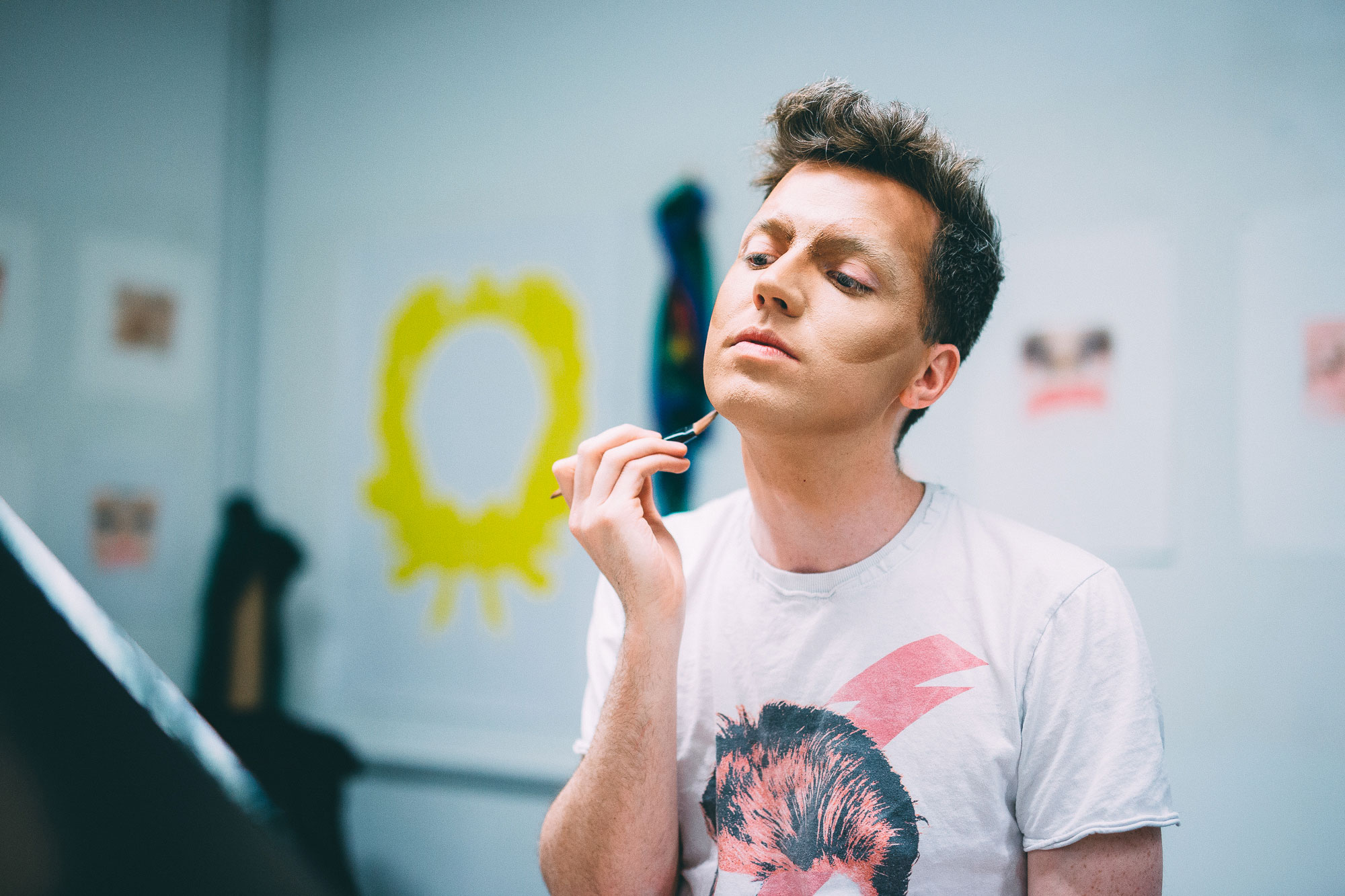
“I started working at a night club in Toronto where I met a lot of interesting people, one of which was somebody who I perceived as a boy but everybody called Judy, and I was confused about it but didn’t question it. Then a few weeks later at a party I spent time with a girl that looked really cool and it wasn’t until the photos came out that I realized, like, oh that’s Judy and Judy does drag and oh I understand. It took me way too long to get it though. Judy has since transitioned so she’s a woman now, and she’s fabulous. She’s my drag mother.”
A drag mother is an older, more experienced queen who acts as a mentor for someone just starting in drag, her daughter. Irma had such a strong community in Toronto that she talked about having drag sisters as well.
“My first solo performance was to Girl Anachronism by The Dresden Dolls, and I was made up to look like Amanda Palmer. I just went crazy, I had a suitcase full of stuff that I brought up on stage that I started throwing around and like, I smashed a glass and threw pills everywhere, threw clothes all over the place, had like three outfit reveals. It was such a good start.”
You could hear the pride and enjoyment in Irma’s voice as she reminisced about her first time leading her performance, and without a beat Jason’s self-deprecating humour added with a laugh: “It was only downhill from there.”


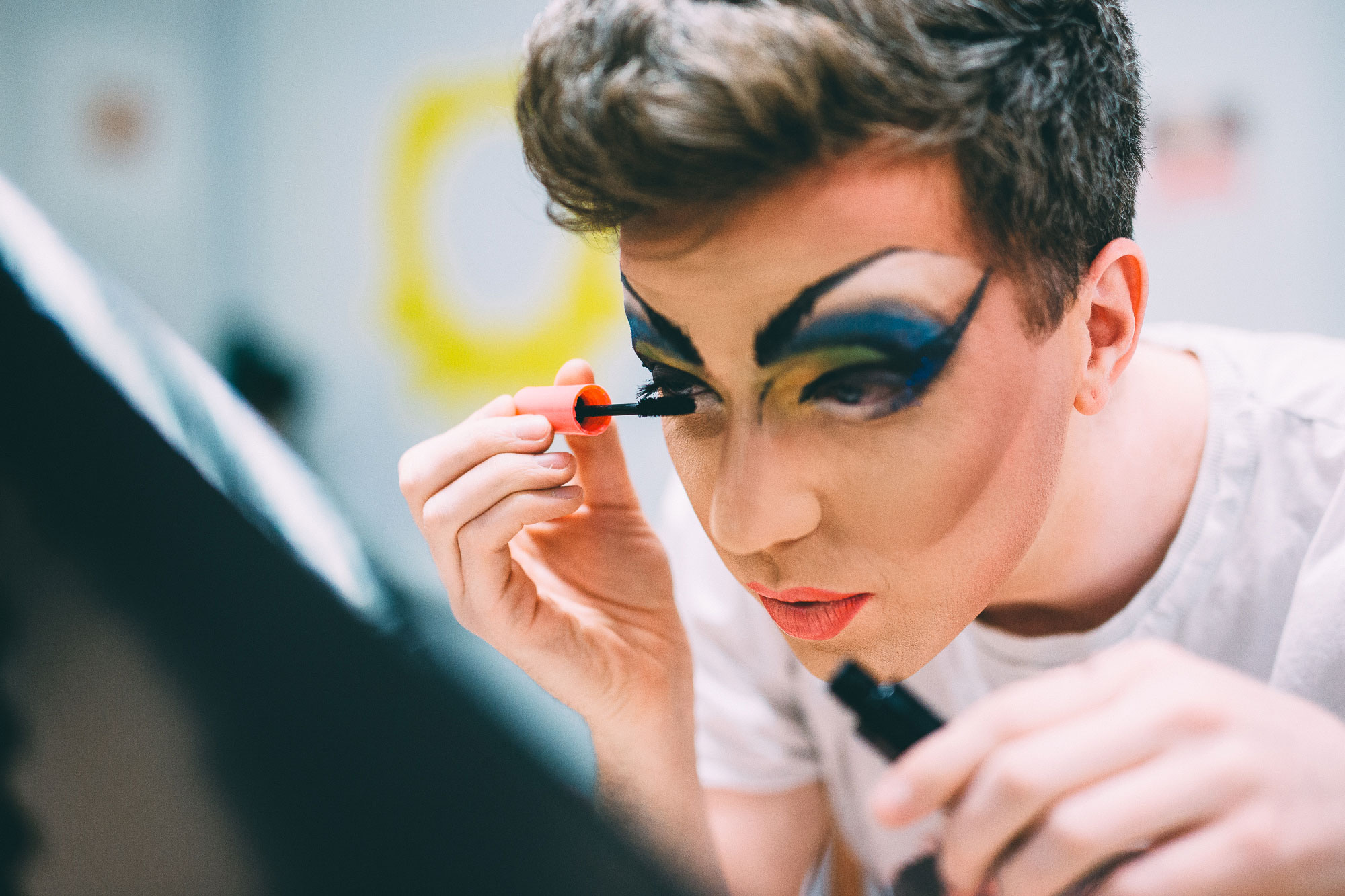
Watching Irma do her makeup was transfixing, and I kept forgetting to ask questions and just watched her instead. It was meticulous and careful, and at the same time bold and full of risks—dark eye shadow doesn’t allow for a lot of mistakes. I realized afterwards that I never looked at the mirror from her side, which seems like both a shame and a wonderful mystery. Her reflection was her own, and she made it perfect.
Some of the stories she told were thought-provoking, referencing parts to her experience as a drag queen that ran deeper than her layers of makeup and flashy smile.
“Drag is fun. I always loved dressing up in costumes, or even just in fancy clothes. So it’s fun to have a monthly excuse to do it. I like turning into someone else. But with drag it’s also about being able to tell a story, through the combination of what I look like and what song I might choose, and my actions, you know. Even if that story is just for me, I do put a lot of thought into that when I’m performing.”
Other stories peaked the audio recorder with laughter.
“Mom came into town once when I first moved to St. John’s, and we went to Winners and she was looking at this dress, and I was like, it’s so beautiful mom you should buy it, and she was like, I want to but it’s too expensive. She didn’t buy it, and I was really sad because I was in love with it. So I went to Winners and I bought it. Then I wore it to Drag Idol as my opening look, and I won, and then I gave it to her for her birthday.”
The combination of the two kinds of stories drove home the point that for her, drag was an authentic experience that represented something formative in her identity, and it was just plain fun. In that way, drag wasn’t a unique, unprecedented art form; it was just like any other hobby or job. We do what we do because it means something, and because we enjoy it. Drag’s like that.
It felt like the makeup took a long time, then all of a sudden it was done. She fixed her wig, threw on a jacket and a couple accessories and suddenly all remnants of the careful, laid-back makeup artist were gone, and in his place was a queen.

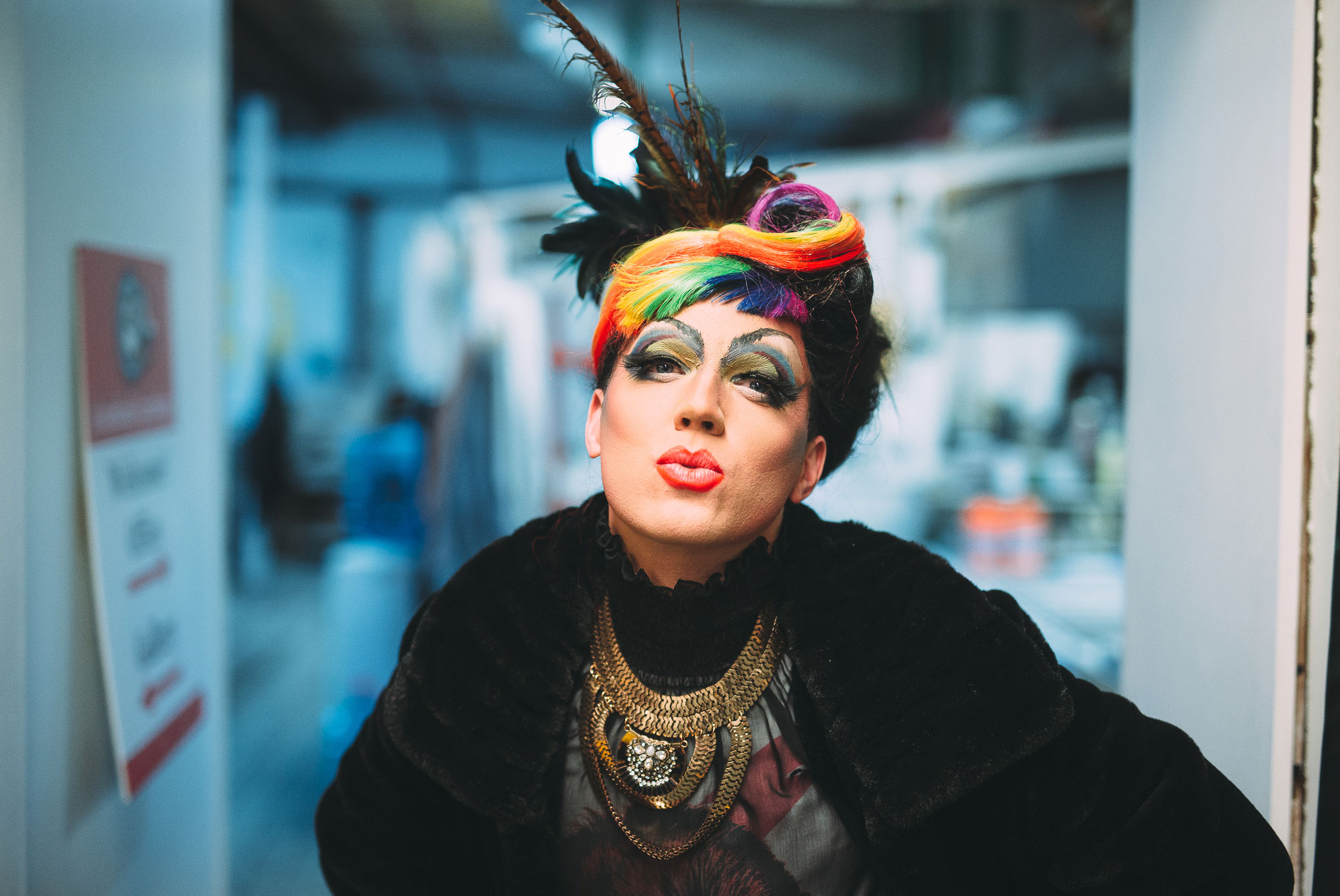
I took a break to talk on the phone with a transgender teenager, and came back with the question why Irma was a drag queen and not ‘just trans.’
“That’s a good question,” she said slowly. “I’m a gender transformer, not transgender. I mean, everything related to gender is on a spectrum, it’s all fluid, but I think the major difference is that what I do for performance. There’s a difference between wanting to perform as a woman and actually being a woman.”
“All gender is performance, anyway. And drag is a subversion of what we’ve been taught, you know, that boys don’t wear dresses. You just say, why not? Then you start doing it.” It was only a slight change in her tone that indicated to me that Irma’s michevious humour had resurfaced. “Then people pay you to do it and you’re like, hmm this is why they told me not to do it, because they didn’t want someone coming for their gig.”
We laughed.
“So anyone who’s ever told you not to cry, anyone who’s ever said don’t wear a dress or don’t wear makeup, every single one of them was a drag queen.”
The conversation shifted to the origins of her weekly RuPaul screenings and drag shows in St. John’s. She compared the city to her experience in Toronto and her values related to intersectionality and social justice, then described her own personal experience of creating an inclusive space on the east coast.
“There were a lot of people who felt like they didn’t fit into the queer community [in St. John’s] and I wanted to create a space where people could go and not feel pressured to be like, looking for a hook-up, or felt like they had to drink or stay out late on a weekend. So at the time it was Monday nights, and people could just come and sit down and watch TV together and be themselves, which was pretty chill.”
“They have RuPaul’s Drag Race Convention now, which is in Los Angeles, and apparently it’s a lot of thirteen year olds. RuPaul’s Drag Race has really normalized drag, which is interesting because it’s this punk, underground queer thing that has been brought into the mainstream. It’s bittersweet.”

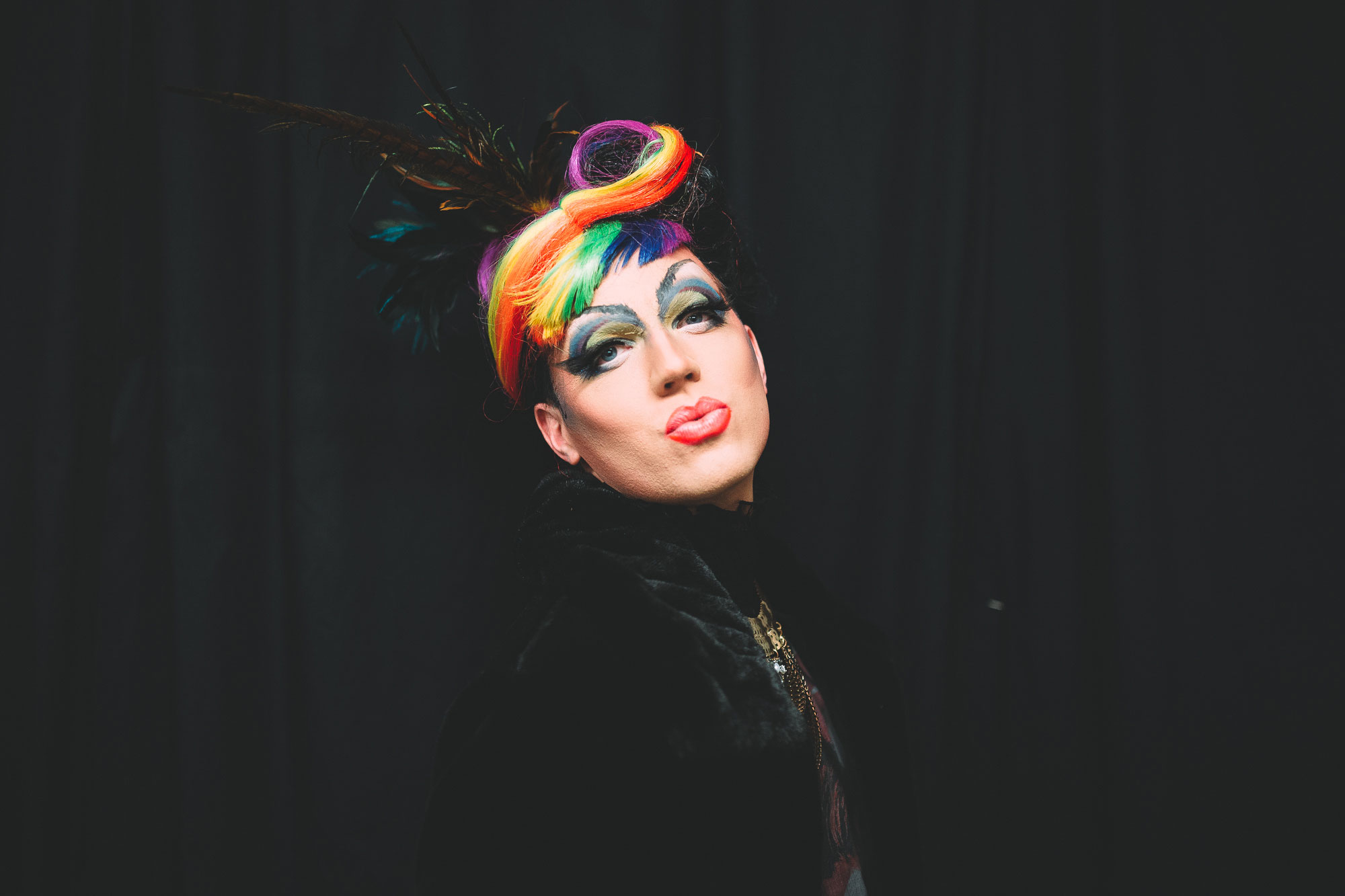
“What would you tell a kid who’s never heard of drag before?”
You have to imagine Irma grinning and the quiet laughter running through her voice as she replied: “Fuck off.”
We laughed again, then I added, “Okay, they say, ‘Drag, what’s that?’”
Her answer was simple. “I say, ‘It’s when I dress up in women’s clothing and mash my mouth around to the words of other people’s songs.’ And they’ll go, ‘You’re weird,’ and I’ll go, ‘I know.’”
I asked about the history of drag and she told me about drag performances in World War II, then clarified: “I wouldn’t say that’s when it started, I’m just trying to think how far back of a reference I know. But it goes back forever. Since the dawn of time.”
There was a moment of silence, then she gasped. “Drag name. Donna Time.”
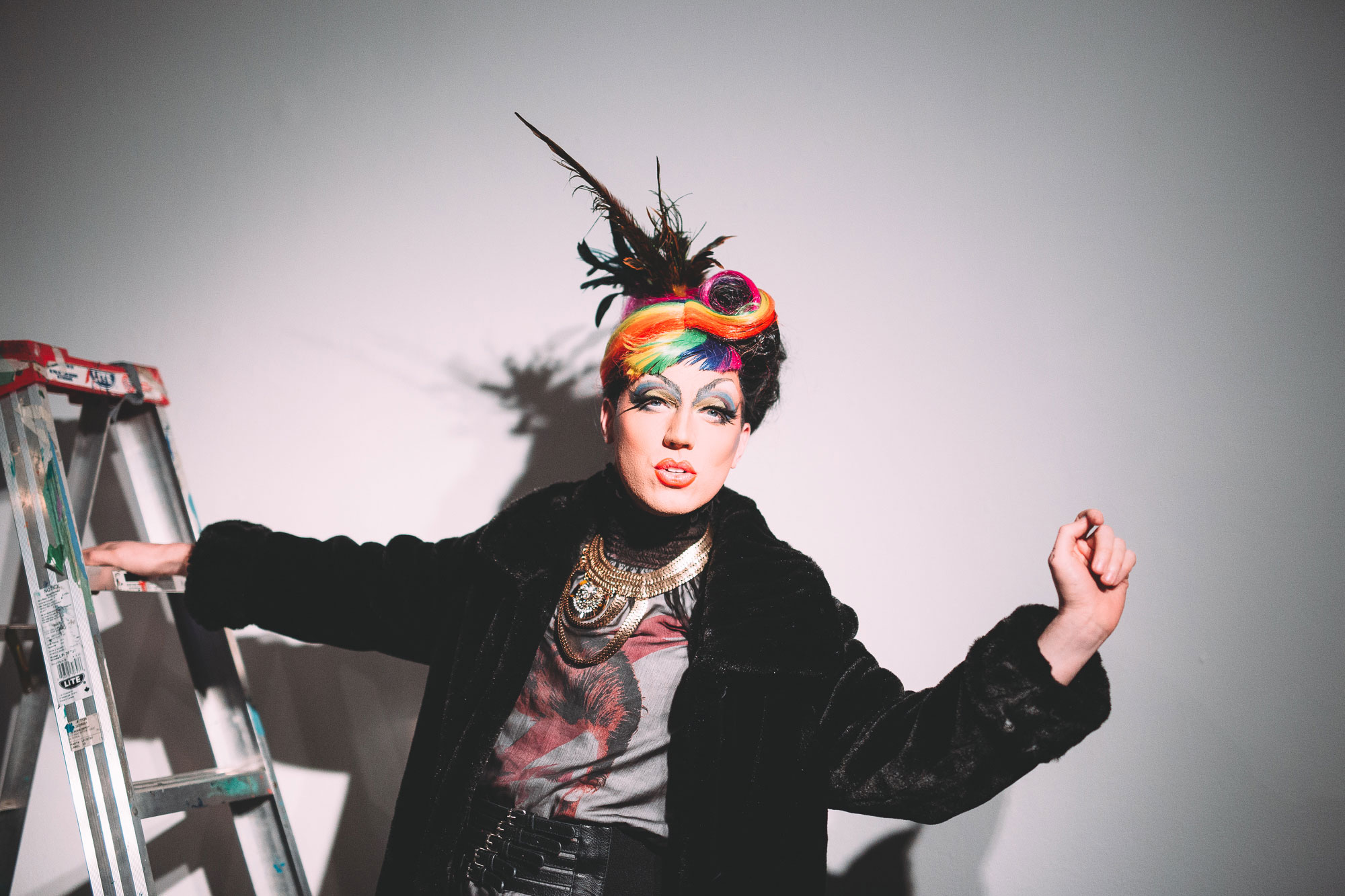
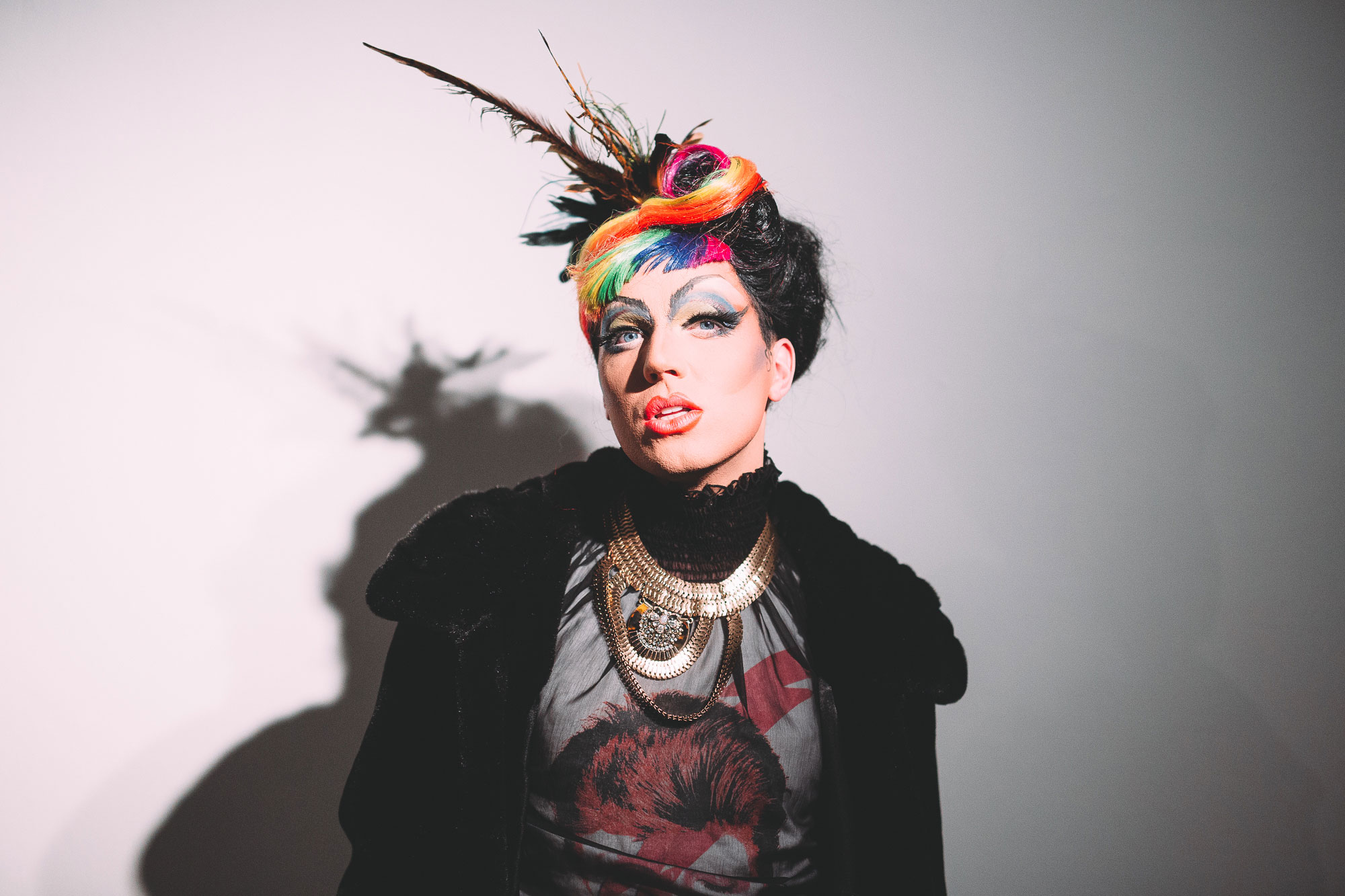
Photographing Irma was one of my most memorable shoots in all of my experience as a photographer. She was like a professional model, and her transformation from the young man that walked in off the street made it all the more impactful. I loved her makeup. I loved David Bowie emblazoned on her t-shirt. I loved her lack of hesitation and her playfulness and the fact that she could make joke poses that still looked stunning.
Like I said, privileged. I learned a lot. Took great photos. Next time, some of the lipstick will go on my lips.